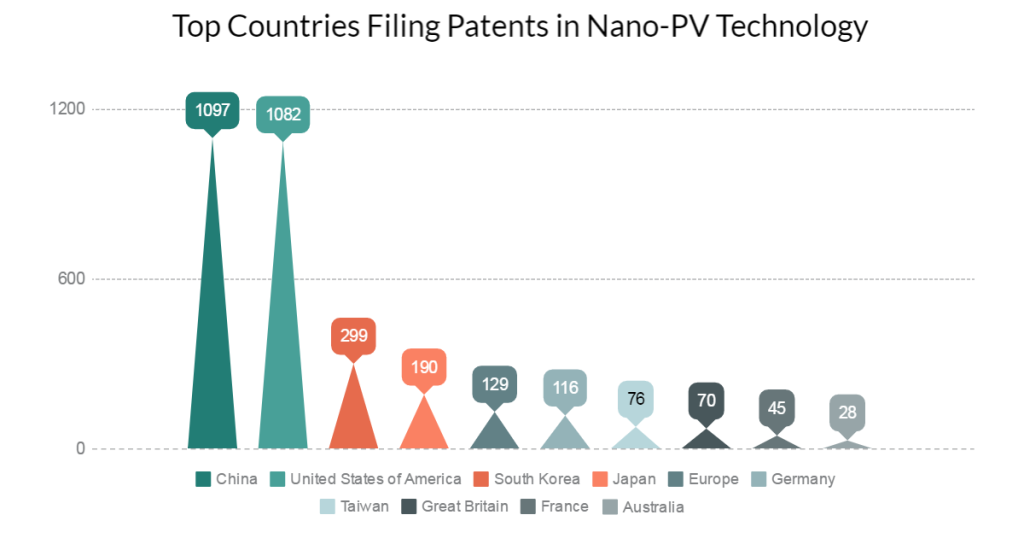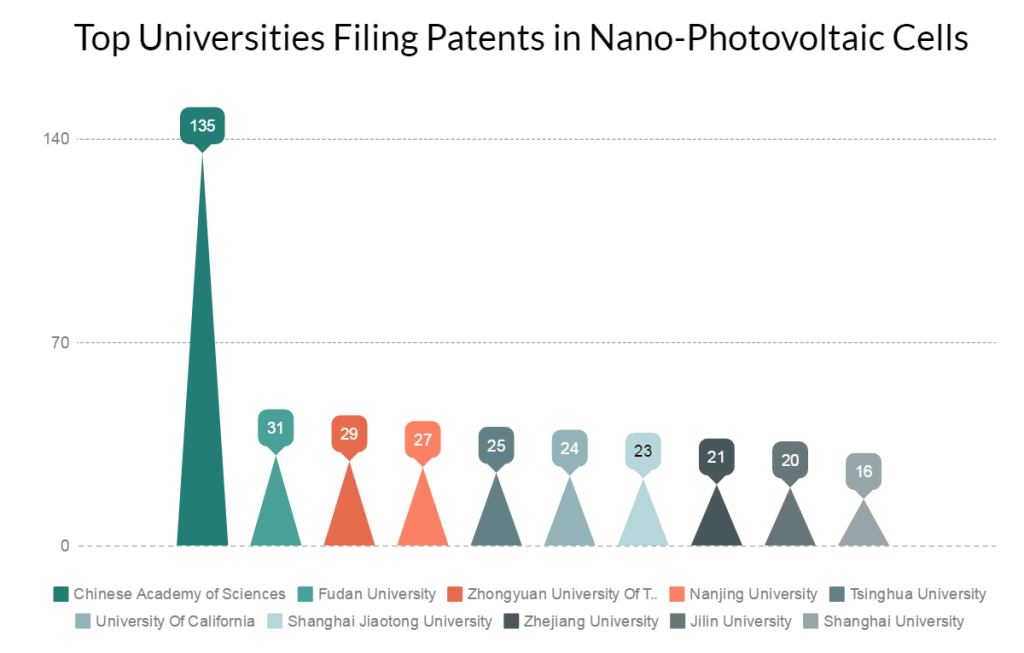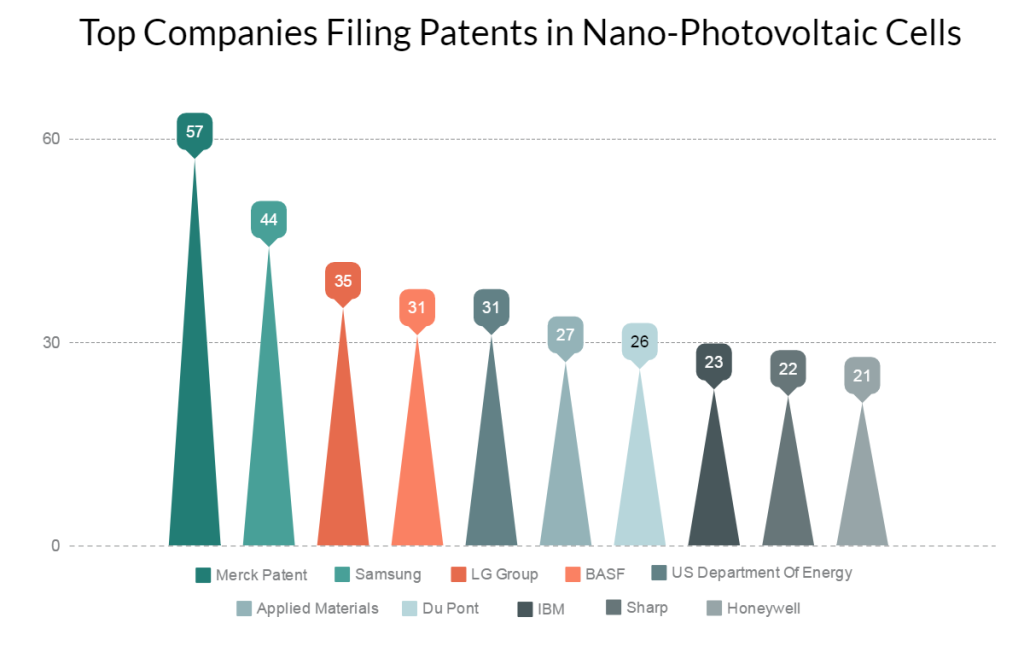Top Countries and Universities Researching in Nano Photovoltaic Cells
In the next 40 years, all of our non-renewable energy resources will disappear if we keep exploiting them at the current pace. Stats like this shifted our focus on finding alternative renewable energy sources. Further, when comes renewable energy sources, nothing compares to the energy potential bestowed on the Earth by the Sun.
The amount of solar energy hitting the state of Texas in a month, for example, is equal to energy produced by the Oil and Gas sector companies of Texas in their entire history. Another interesting thing is the solar power cost which has fallen like a stone over the past few decades. In 1977, you had to pay $76.6 per watt as compared to $0.74 watt in 2013, for example.
The credit for this fall in price goes to the governments that have been promoting the solar power and organizations that have been conducting relentless research in the domain for decades. And this article is focused on these research efforts in which we will be shedding light on the countries and research institutes of Nano photovoltaic cells.
To derive our insights we analyzed patents filed in Nano Photovoltaic cells since 2005. This article is a part of our in-depth technology landscape analysis on solar cells (specifically about nano-photovoltaic solar cells). For your ease, we have divided the entire analysis into 4 major parts, each covering a big aspect of this industry. You can jump on the part that is most relevant to you using this menu below:
- Disruptive Breakthroughs In Solar Cells
- Solar Now Cheaper Than Oil, What Future Holds For Nano Photovoltaic Cells
- Who’s Innovating In Nano Photovoltaic Cells Domain
- Top Countries And Universities Researching In Nano Photovoltaic Cells
In case if you’re interested in getting your hands on the entire analysis in one single PDF (you can save it for offline reading or for sharing ahead with relevant people), you can download it from here.
Research Trend in Nano Photovoltaic Cell – An Overview
The research in PV cells is in full swing. Many research institutes and tech organization from all around the globe are trying to eliminate every possible challenge in making solar cell efficient, affordable and mainstream.
A lot of breakthroughs in photovoltaic cell domain over the several past decades increases their efficiency by multifold. Today researchers are even working to develop a 100% efficient solar cell. Researchers from the University of Cambridge, for example, have found a way to make 100% efficient solar cell by using ‘dark’ spin-triplet excitons with organic semiconductors
Another complication of heat and rise in temperature which directly affects the efficiency of PV cells has recently been solved by a team of scientists from Israel, Switzerland, and Singapore. Their study suggests deploying perovskite solar cells under concentrated sunlight to increase efficiency. In this cell, the efficiency shoots up when the cell heats up, unlike the conventional panel where the opposite happens.
Attend our Free Live Training Session for University Tech Transfer Office on How TTO Can Increase ROI on Patents here: Click here to Register
The use of nanotechnology in the solar cells is another way to achieve these goals. The low-temperature manufacturing process reduces the cost while the use of quantum dots increases their efficiency. Other than that, the technology also facilitates manufacturing of solar panels so thin and lightweight that you’ll be wearing them in the upcoming time.
The applications like low cost and higher efficiency have increased the research in Nano Photovoltaic cell by multifold. Looking at the patent filing in the domain, for example, represents a 600% increase in the patent filing in 2012 as compared to 2012.
Top Countries Researching in Nano Photovoltaic Cell Technologies
The graph below gives you an overview of research hotspots for Nano Photovoltaic Cells. China with 1097 patents is the top country with a maximum number of the patents in Nano Photovoltaic cells technologies. The USA with 1082 patents sits at #2 spot and is not so far behind.

Both China and the USA represent a great market for Solar cell technologies. In 2015, the USA boosted its solar energy production to +26,000 megawatt/hr which is an increase of nearly 5000% when compared with solar energy production in 2005. China, in 2015, reached a 32000 megawatt/hr production rate.
In term of solar panel deployment also, China tops the list followed by Germany, Italy and the USA. Participation by other Asian countries like South Korea, Taiwan and Japan can also be seen from the graph. The energy demand in Asia is expected to increase by 80% in 2040 and to meet that, Asian countries will have to make the best use of solar energy.
The energy demands of China are projected to get double by 2026. To meet these grown demands, China is focusing on non-renewable sources as well and is the top innovator of Digital Oil Field Domain
Top Universities Filing Patents in Nano-Photovoltaic Cells Technology
The Nano PV technology is quite a new concept which hasn’t become popular among commercial sector yet. Hence, a large part of the research is either coming from universities or research organizations of different countries.
The graph below gives details of top universities along with their patent count in Nano-PV cell technology.

The surprising thing is that 9 out of top 10 spots are clinched by Chinese universities. Plus, the number of patents filed by Chinese universities is way more than that of top companies working in the same domain.

Chinese Academy of Sciences, for example, has filed more patents than the top two companies. The Laboratory of Photovoltaic Materials and Devices (LPMD) at Shanghai Institute of Ceramics of the Chinese Academy of Sciences was established in 2003. The current research going on here focuses on:
- A new concept of nanostructured PV materials and devices.
- Preparation of high-quality Graphene and its application in PV devices
Center for photovoltaic solar cell (CPSC) in Shenzhen Institute of Advanced Technology (SIAT), Chinese Academy of Science, focuses on developing thin-film CIGS semiconductor solar cells.
Due to the exhausting Coal and Petroleum and increasing global warming, the alternative for energy source needs to be discovered. China is taking this seriously and seems to have good future plans to sustain energy requirement for its high population.
The leading corporations of solar cell domain should collaborate with these universities researching extensively in the domain. The industrial-university collaboration will not only accelerate the pace of the research but will lead to many new marketable products also.
The good news is that many such collaborations already exist. In the last article of this series, we have discussed the market coverage, futuristic challenges and various universities and corporation collaboration in the domain of Nano PV cells. Consider reading the fourth installment here: The future potential of Nano PVC Cells
Authored By: Shelza Gupta, Senior Research Analyst, Concept Hacking and Shabaz Khan, Research Analyst
Access Other Parts of The Series:
- Top Companies Filing Patents in Nano Photovoltaic Cell Technologies
- Top Countries and Universities Researching in Nano Photovoltaic Cells
- 5 Disruptive Breakthroughs In Solar Cells
- Growth & Market Coverage of Nano Photovoltaic Cells
-
[…] you are looking for universities to collaborate with in the non-photovoltaic cell technology. Having a look at the patent filings of the universities, you can have a narrowed down list for […]
Leave a Comment





Fascinating article.
1. Did you include utility model patents? These can really increase the number of filings but they face lower novelty requirements.
2. Did you check to see how many of these Chinese initiated patents were filed outside China? Because of state subsidies and quotas, many patents are filed, but not maintained or filed in key countries of manufacture or consumption.
Hi Esmaeil,
We are glad you liked the post.
Regarding your concerns –
1. This study includes utility model patents as well in addition to other patent applications, because it is very much similar to a patent, differing in terms of life span only. Thus, these utility models would too contribute in deciding the amount of research being conducted in this technology.
2. Yes, we have checked the work done by Chinese researchers outside China, and would be sharing the output in our follow up post.